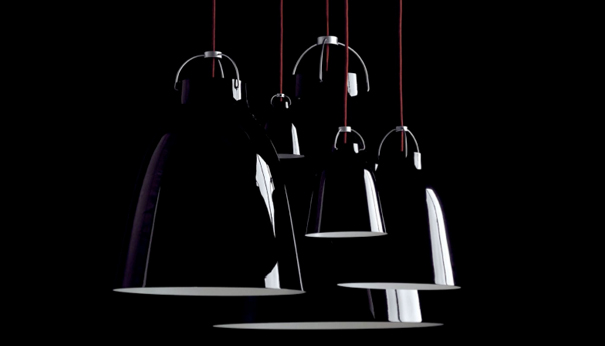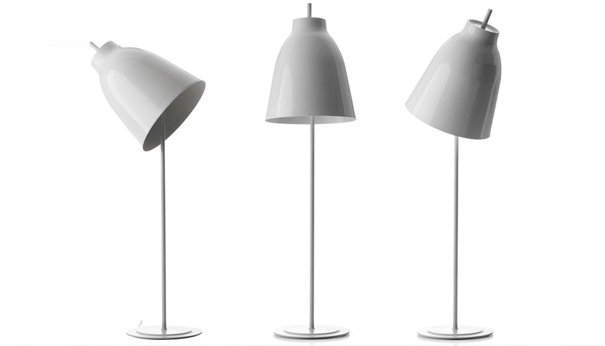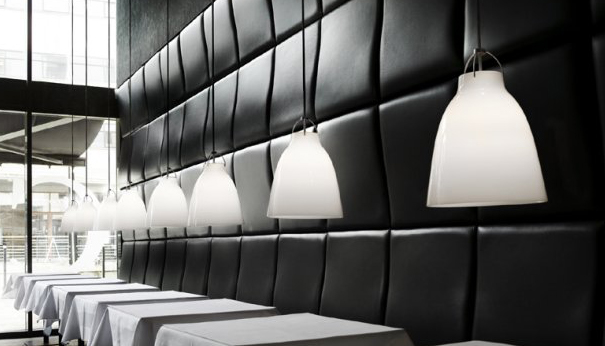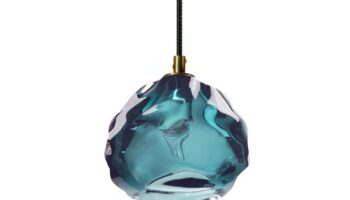Caravaggio Lamps Master the Shadow
Named after the famed Italian painter, Caravaggio Lamps succeed in channeling the artist's tenebrism, a heightened form of chiaroscuro. The lamps' primary focus is to control light, as both Caravaggio's manufacturer and designer will attest. Lightyears explains their company philosophy in this way: "First and foremost, it [a lamp] should ensure functional lighting, but at the same time offer an aesthetic experience, whether it is on or off."
Caravaggio Floor Lamps. Designed by Cecilie Manz for Lightyears.
This emphasis on function is shared by Caravaggio's designer, the Dutch Cecilie Manz, who states, "Design should never receive greater focus than the light itself." These statements may seem obvious, but there are designers who neglect light in favor of a lamp's overall style, so Lightyears' and Manz's strict adherence to function is laudable. Even more impressive is how Caravaggio's function translates into form-beautifully. In paying heed to purpose, the lamps do not ignore aesthetic concerns. The Caravaggio Table and Floor lamps were recently noted by Designboom in their coverage of Stockholm Design Week 2009.
The newest versions of Caravaggio, the table and floor lamps bring Manz's design from the ceiling to the ground. Both lamps are made of metal with a lacquer finish, but the shade is high-gloss while the foot and standard are dull. This treatment in contrasting finishes allows the shade to be more visually dramatic as it controls the nature of the light (Caravaggio never forgets function). Speaking of function, both the Caravaggio Table and Floor Lamps include a flexible tube that allows the shade to tilt to 40 degrees, making the lamps task-appropriate. Both of these Caravaggio models will hit stores in May 2009.

Caravaggio Pendant Lamp in black. Designed by Cecilie Manz for Lightyears.

Caravaggio Floor Lamp in white. Designed by Cecilie Manz for Lightyears.

Caravaggio Opal Pendant Lamp. Designed by Cecilie Manz for Lightyears.
The real show-stopper, however, is the original Caravaggio Pendant Lamp, which comes in five different sizes: 110, 165, 257, 400, and 550 mm. Manz's goal was to create a "simple, soft design" for small and large pendant lamps. By all accounts, she succeeded-already Lightyears calls Caravaggio "a genuine new classic." Although the shade went through various shapes during the design process, the finished product is rather feminine. This shape, however, is balanced by the masculine hardware of the lamp, "curved steel rods and two pieces of die-cast, aluminium-zinc alloy coated in matt chrome." The overall look of the Caravaggio Pendant is so attractive that one might forget the functional impetus behind its creation, but the pendant lamp directs light without glare and even adds to a room's ambient lighting with the opening at the top of the shade. Once again, Manz has "ensured that function always prevails."
Two alternative versions of the Caravaggio Pendant Lamp must also be mentioned. The Caravaggio Opal uses a special transparent white glass that radiates light in all directions, so that the light appears to be a glowing drop hovering above the room. To counteract Opal's femininity-here intensified by both the shade's shape and the quality of the light-the pendant lamp comes with a cord that is wrapped in a masculine grey textile. The P4 large pendant lamp is Caravaggio's supersized version, intended for grand, high-ceilinged rooms. Both of these modified Caravaggios prove that Lightyears and Manz think of all possible lighting needs-and desires.




Leave a Reply